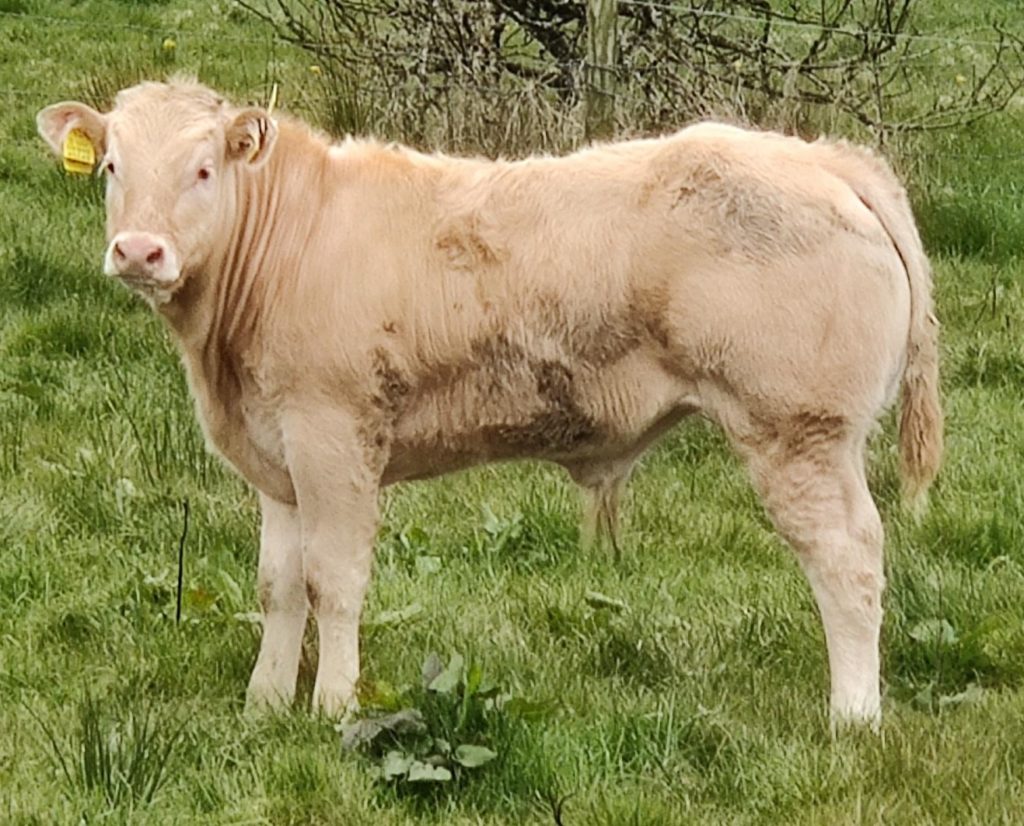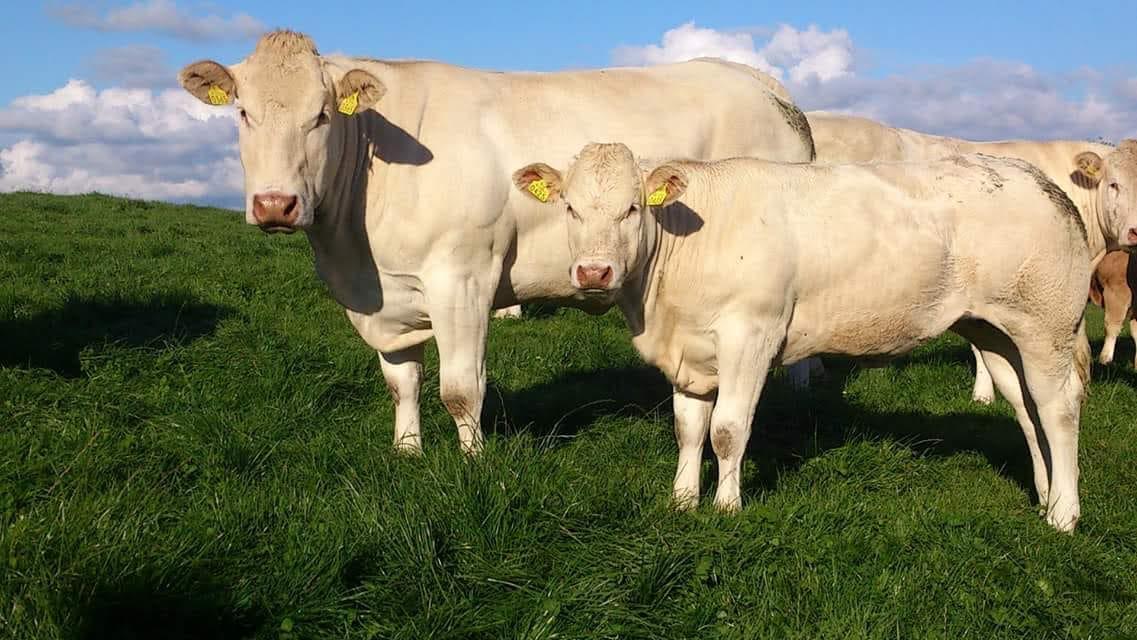This breeding season, both dairy and beef farmers should consider the Blonde d’Aquitaine breed for both dairy and suckler beef production and suckler replacements.
This breed offers many desirable beef traits, making it a profitable choice for dairy and beef farmers.
These traits include: Easy-calving; hardy, vigorous offspring; docility; good growth rates; good feed efficiency; high carcass quality; and good mothering abilities.
Blonde d’Aquitaine traits
Easy calving
At birth, Blonde d’Aquitaine calves are long and slim with light bones. They also have an elongated head and small feet.
Furthermore, the breed doesn’t begin to build muscle mass until they are approximately four weeks of age. Therefore, the calf has very little muscle at birth. This characteristic contributes to the breed’s ease of calving.
Blonde d’Aquitaine females have a wide pelvic cavity which is particularly suited to calving. This characteristic, which is a heritable trait, even in first cross-bred heifers, makes these females very suitable for breeding.

Hardy, vigorous offspring
Blonde d’Aquitaine calves are alert and very lively at birth, with calves usually standing within ten to fifteen minutes of birth and normally suckling within an hour.
The calves that are born outside have a natural instinct to find their own shelter.
Docility
Blondes are a very docile breed with a very calm temperament.
This characteristic allows for ease of management and a safer working environment.
Growth rates and muscle development
Weight for age and muscle development is what makes Blonde d’Aquitaine cattle a really profitable option. Whether you are selling weanlings, stores, or finishing cattle, the best prices are achieved by the heavier, well-muscled, shapely blonde stock.

Their growth rates and muscle development in relation to their age makes this breed a profitable option for both dairy and beef farmers.
Blonde d’Aquitaine cattle under twelve months of age have an average daily weight gain of approximately 1.1kg for bulls and 0.9kg for heifers under good management conditions.
However, daily liveweight gains of 1.8-2kg/day are not uncommon during the intensive finishing period.
Feed conversion
Blonde d’Aquitaines are unsurpassed in feed efficiency in all feed forms including grass, silage or concentrates.
Feedlot trials have shown that the Blonde d’Aquitaine breed can convert feed at a rate of 5.3-6.5kg of feed/kg of liveweight gain.
Whereas, the typical feedlot performance achieved by other breeds is 7.5–8.5kg of feed/kg of liveweight gain.
The main reason for this difference in feed conversion is that muscle growth requires less energy input than does bone or fat.
As the breed’s body composition is of a finer bone structure with minimal external fat and well-developed muscles, the breed is superior in feed efficiency.
Quality carcasses
Due to their good confirmation, fine bone structure, minimal fat and minimal offal, the kill-out percentages of Blonde d’Aquitaine cattle are exceptional with 70% kill-out rates readily achieved
Additionally, their meat has a marbling quality but does not carry excess fat which results in more tender and tastier beef.

The breed’s exceptional length, highly developed hindquarter and loin produce a higher percentage of more valuable steak and roast cuts.
A large proportion of finished Blonde d’Aquitaine-cross Friesian bulls tend to grade ‘U’ at slaughter, while purebreds typically grade ‘E’.
It is these traits that make the breed extremely attractive to beef finishers.
Fertility
Blonde d’Aquitaine bulls are very active and fertile. These bulls can be observed following a cow for days prior to the onset of her heat.
This allows the farmer to keep good records of cows served. Blonde females have great fertility with some well-managed pedigree herds using 100% artificial insemination and still achieving a 365-day calving interval.
Maternal qualities and milk
Both crossbred and purebred Blonde d’Aquitaine cows are excellent mothers with good maternal instincts and good milking abilities.
The breed’s udders are set high, which means that the teats are less prone to injury during housing. As a result, they are less prone to mastitis in comparison to other breeds.
Lastly, the breed’s milk is of high quality. As a result, even cows that appear to have small udders will rear exceptional calves, and readily rear twins.
Find out more about the Blonde d’Aquitaine breed by clicking here, or here.

